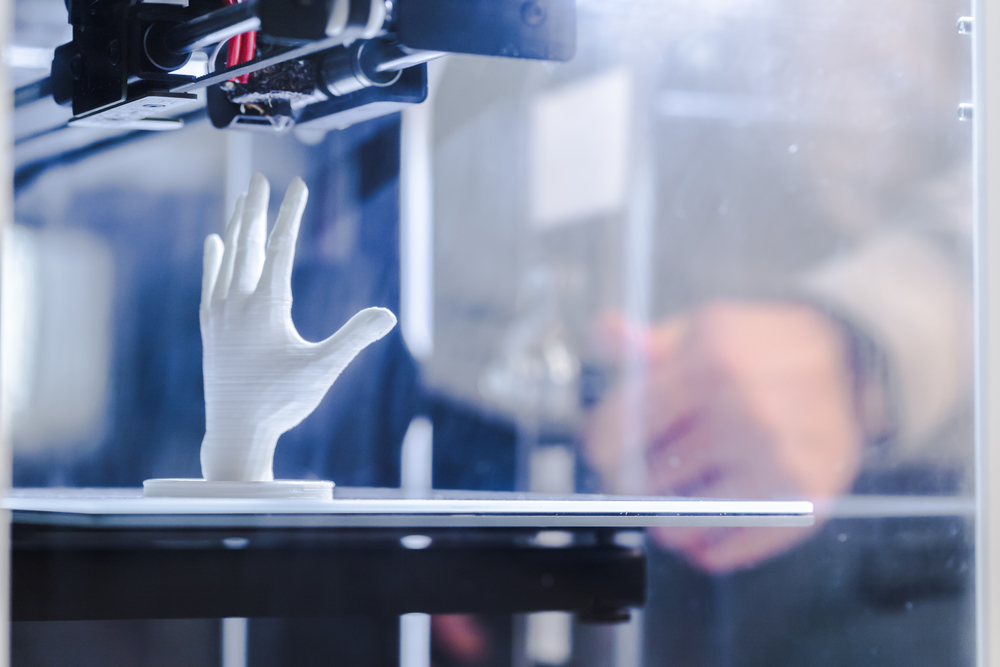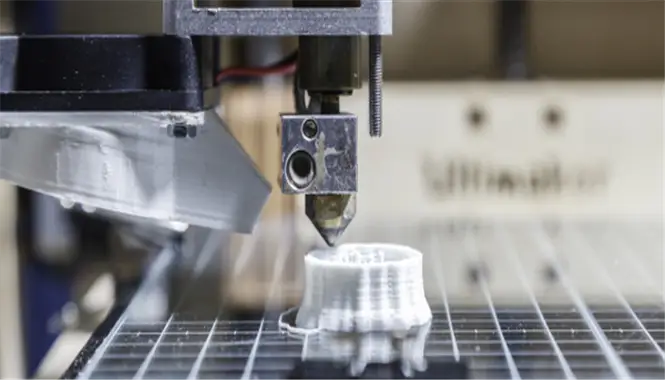
3D printing continues to be one of the most disruptive technologies of the era: it looks set to transform everything – age-old manufacturing techniques, hardware supply chains (why warehouse parts when you can print them on demand?), healthcare etc. Just a few years ago, the hype said everyone might have a 3D printer in their house one day, but the reality is that the technology, while ground-breaking, is still complicated.
Along with stories of household 3D printers came talk of other applications hitched to the 3D printer bandwagon; some of these are here today, some may come tomorrow and others are not really anything to do with 3D printing at all. We take a look at a few areas covered recently under the 3D-printing banner in the popular press.
Can you 3D print organs?
No, you cannot 3D print organs today. There are some printers which can extrude (i.e. print) biological matter, and there are indeed research and development efforts to print human tissue, but, in 2017, these represent a very, very small portion of the $5B 3D-printer market. However, the technology is catching on big-time in other aspects of the medical world.
One of the key advantages of 3D printing is that it can be used for mass customisation, meaning that one machine can make many subtly unique things. The best examples of this are hearing aids and clear dental braces, both of which have been made by 3D printers for more than fifteen years. There are many of these items produced, and each is unique to an individual patient. Likewise, orthopaedics is a big market for 3D printing.
You are probably aware that plastic limbs are 3D printed, but super-high-end metal printers are being used more and more often to make internal prosthetics as well. Hardly a day goes by without a story being written about the production of a titanium skull section or another bone being replaced with a custom-manufactured metal part. These are realities today, not just R&D projects for tomorrow.
Can you 3D print food?
Sort of. This was one of the things all the hype focused on a few years ago. Most of the printers simply extruded different pastes into shapes. True 3D printing is also sometimes called additive manufacturing (the seven core technologies referred to above are actually defined by a manufacturing body called the ASTM). Today’s food 3D printers are not really used for mass-manufacturing, and the number sold to-date is so small as to be hard to count. So the 3D printing of food is really a PR activity rather than a real market (or even sub-market).
Can you 3D print cars?
While a few companies have showcased their ability to 3D print cars, there isn’t yet a car you can buy that that is completely made this way. That said, there is hardly a car you can buy today which doesn’t use 3D printing for some element or part of its construction: the technology may have been leveraged for prototyping the vehicle at all stages of development, or – more and more often – the intricate metal components may be mass-produced using 3D printing.
READ MORE: Ford turns to 3D printing for car of the future
The automotive industry at large is ripe to make greater use of 3D printing as the falling cost of technology and materials allows additive manufacturing to move beyond the prototyping that was once its niche application, into the much larger market of general manufacturing or mass-production. The crossover point, where it is less expensive to use 3D printing than traditional manufacturing techniques (such as injection moulding), can be hundreds of thousands of units or, now, even tens of thousands. Mass production in the automotive industry generally refers to much lower volumes than for manufacturers of say smart phones or televisions: if you consider specific companies and their distinct models of car (many of which do not share common components), then mass production can mean tens of thousands of parts (versus millions) – a volume now viable with the reality of today’s 3D printers.
Can you 3D print buildings?
This one continues to catch a lot of media attention, especially in the Middle East and emerging markets. You can indeed use some of the techniques of traditional 3D printing at VERY large scales to, for example, extrude cement instead of plastic. To be honest, however, this is not really part of today’s 3D printing market, and with the references to “3d printing” made mostly to help describe the technique used to create structures layer-by-layer.
Can you 3D print clothes?
Cloth is essentially a two dimensional material so this one is a bit of a stretch. There have been R&D efforts showcased which leverage some of the principles of one or other of the seven core technologies, but they are, once again, not part of today’s 3D printing marketplace. Likewise, 3D-printed makeup, which was a thing in the fashion world a few years ago, isn’t really 3D printing either. In both cases, the term “3D printing” was used liberally in marketing materials, but it was effectively just a (successful) way of getting PR for new techniques.
Can you 3D print jet engine parts?
FOR SURE. The best use case of 3D printing today, the poster child if you will, is in GE’s jet-engine fuel nozzle. This complex, unique part can only be made by metal additive manufacturing – traditional techniques are not capable of creating such an object. GE continues to be one of the world’s biggest users of 3D printing and is so bullish about the technology that it is buying metal 3D-printing companies to make machines not only for their own use but also to sell to others. The aerospace industry as a whole is one of the largest markets for 3D printers today, with the technology now being leveraged for true mass-production of parts as well as prototyping.







